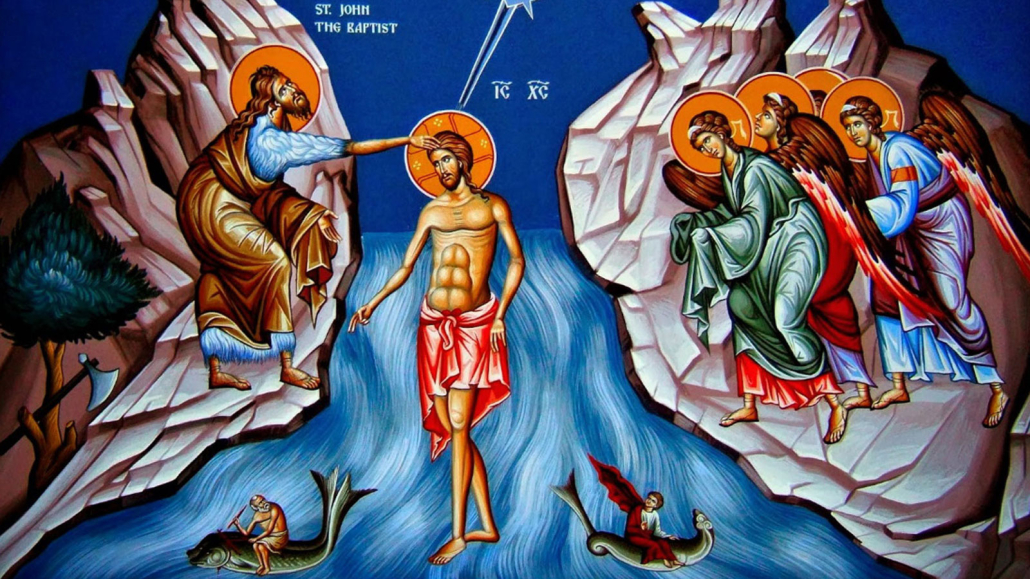Image: Orthodox Icon of the Baptism of Christ (Theophany).
‘What do we see?’
Andrew Collis
Lent 1, Year B
Genesis 9:8-17; Psalm 25; Mark 1:9-15
The Orthodox icon is called Theophany.
What do we see? Jesus descending into the water … the River Jordan, remembered scene of safe passage – from a life of slavery (the little humanoid figures in the water – Yam and Nahar – symbolise oppression) to a life of freedom and responsibility. Jesus submits to baptism in the Jordan, identifying with the needs and hopes of God’s people – repentance and reorientation, forgiveness and transformation.
Jesus submits to baptism before he has the certainty of a call or ministry. One commentator refers to a river of tears – salvation history, human history, with all its grand plans and failures. We might imagine our own grand plans and failures. We might imagine Christ with us.
What do we see? Jesus descending into the water … the world. Writes one iconographer: “Christ makes known the depth of his identification with humanity and creation. He allows himself to be covered in the water and thus fills it with his divine presence. Heaven is united with the Earth. He blesses the water and gives it a sacramental dimension …” (Solrunn Nes).
Jesus submits to baptism before he has the certainty of a call or ministry. Perhaps he is already inspired, Spirit-led – and if so, expresses solidarity with others in affirmation of the material world – the beauty of rivers … fishes and reeds, rocks and sand … river country …
What do we see? What do we hear? An event from long ago, or something more … contemporary, eternal? A trinitarian theophany … God the Lover of the world … Jesus the Beloved in the world … the Spirit of Love descending in the form of a dove, sign of reconciliation and new life (see Genesis 8:11).
“Throughout Jesus’ ministry the heavens will stay open,” Brendan Byrne sees. “The [B]eloved … will remain in communion with the [Lover] … and through the power of the Spirit effect in human lives the liberation from the grip of the demonic that is [God’s] mission.”
In other words, God leaves heaven to offer divine love to all. This is what God does. This is who God is.
What do we see? St John of Damascus, a 7th-century monk and apologist, saw eight baptisms (traditional baptismal fonts have eight sides): the Flood; the Sea and Cloud; the Torah (with its laws about washing and purification); John the Baptiser/Forerunner; the Baptism of Christ (into which we are incorporated); Repentance and Tears; Blood/Witness; Holy Fire/Light.
St John said: “Christ is baptised … making our purification his own.”
Before any good work of which we are capable (before being tested in the wilderness), and simply because of our union with Jesus, each of us can take to ourselves the divine assurance: “You are my Beloved, my Own. On you my favour rests.” Amen.




